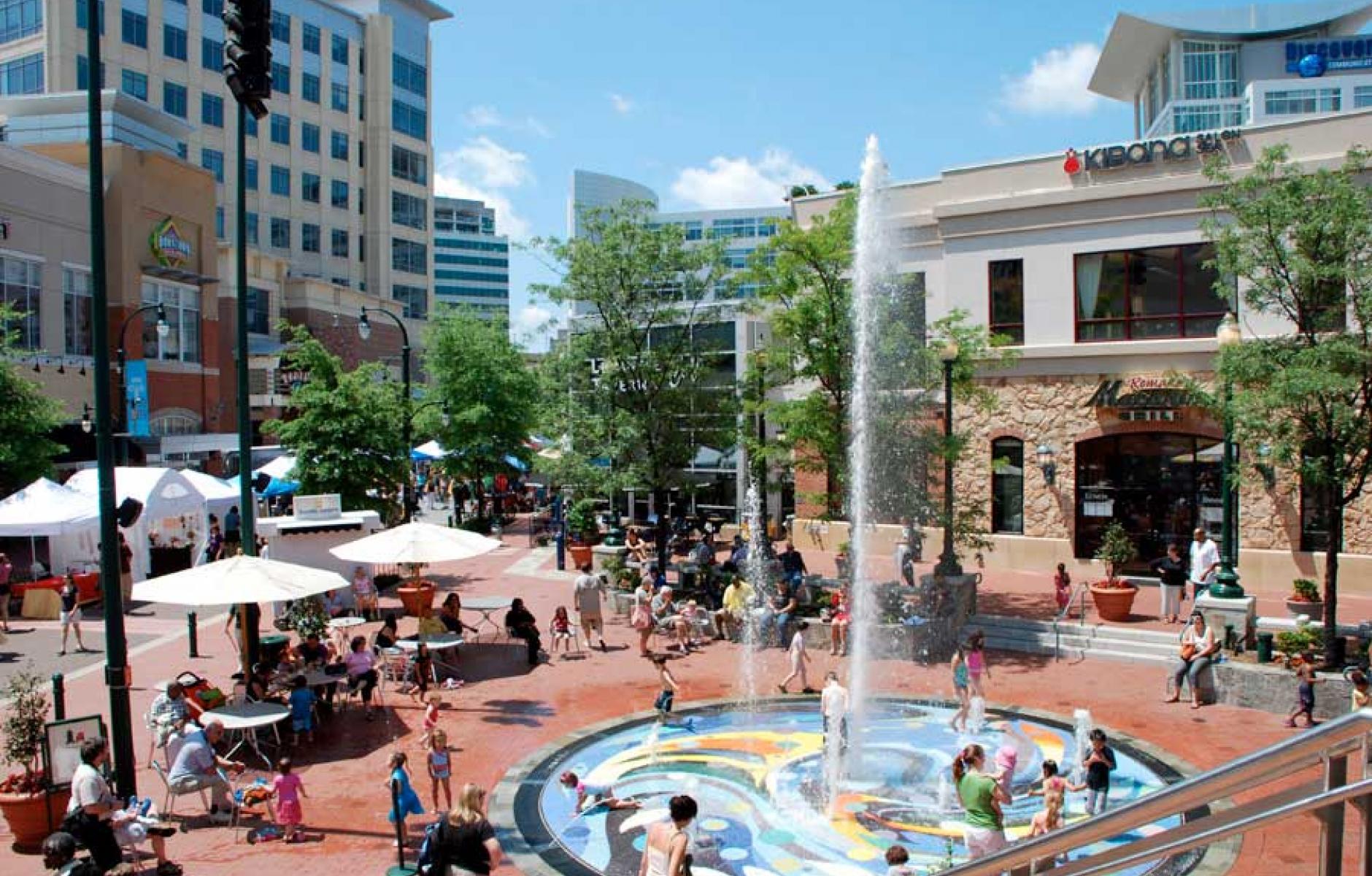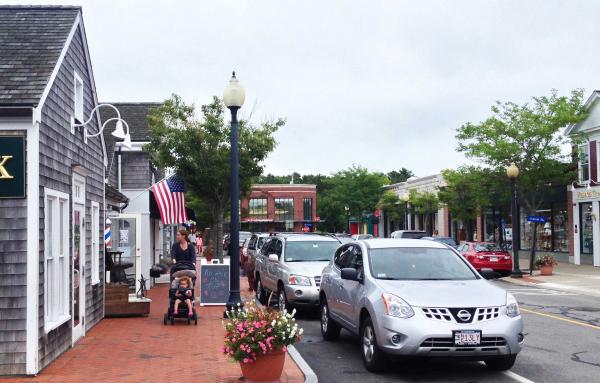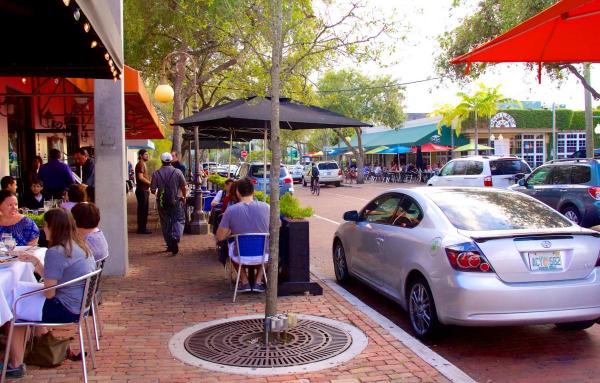
Malls to mixed-use centers and other opportunities
This is one of a series of ongoing Public Square articles on the market, technological, and cultural transformation of the $5 trillion retail industry—and how it relates to a continued shift toward walkable, urban living.
The retail industry is going through major upheaval. This situation does not come close to a “retail apocalypse,” as reported in a recent article in this series, yet department store anchors and apparel tenants of regional malls are closing at an alarming rate.
As a result, analysts estimate that as many as 300 enclosed US malls are likely to close in the next half decade. The good news is that these mall sites can be terrific opportunities for redevelopment or reuse. In strong markets they can be redeveloped to feed the growing market for walkable urbanism. In weaker markets they can be re-filled with more community serving uses. Here are the numbers:
About 1,500 enclosed malls have been built across the US since 1956, when the Southdale Center opened in Edina, Minnesota. About 1,000 are still being used for their original purpose, while about 500 have closed or changed to a different use, according to research by Ellen Dunham-Jones of Georgia Tech. Of the 500, more than half have been, or are proposed to be, redeveloped. Of these, 56 projects have been built as mixed-use urban places, and another 75 are proposed to be transformed along these lines, Dunham-Jones says. About 120 malls are, or are expected to be, redeveloped for other uses besides mixed-use—including sports arenas, industrial sites, movie sound stages, data centers, distribution centers, job centers, or housing.
About 170 are, or likely will be, re-inhabited: Office space is the number one re-use—ranging from low-wage call centers to incubator high-tech for the likes of Google X and Ford Motor Company—along with a substantial number of educational and medical facilities. A few have become mega-churches. Twenty or so have been replaced by parks or partly “regreened,” including wetland restoration. At least 60 remain vacant with no immediate plans for change and others have been replaced with big box stores or strip malls.
Malls put to productive use
This is not like the 1980s, when massive industrial sites were being abandoned all across America and left to rot for decades. Many dead mall sites are in good locations and they are being put to productive use. So far, the reuse proposals have largely kept up with the closures. As mall closings accelerate, two questions stand out: Will the reuse continue to keep up—particularly during and after the next economic downturn? And, will mall sites be put to the highest and best new use, one that is sustainable and adaptable for the future?
Municipalities and owners with troubled malls can begin planning and acting now to deal as gracefully as possible with the inevitable upheaval. This dark cloud has a silver lining—the opportunity to rebuild these sites in a smarter way.
“One of the primary advantages of older shopping malls is the communities that have grown around them,” note June Williamson and Dunham-Jones, co-authors of Retrofitting Suburbia. “The needs of these neighbors go beyond shopping and entertainment to include medical and other services, jobs, education and physical activity. Another advantage is the vast expanse of surrounding tarmac ready for creative re-imagination.”
Enclosed mall sites usually range from 40 to 100 acres in size. That’s big enough for communities to think big. These malls were built at a time when planning was single-use and automobile-oriented. We are now in an era that emphasizes mixed-use and the human scale.
Enclosed malls face different prospects from so-called “strip malls,” i.e. shopping centers, which sit on smaller parcels (generally 10-20 acres). Strip malls often need one anchor, usually a grocery store—and grocers are doing better than general department stores. While shopping centers also offer mixed-use redevelopment opportunities, they are less fragile in the current retail environment. There are many thousands of strip malls, and they tend to be family-owned—as opposed to corporate ownership of enclosed malls.
When dealing with a dead enclosed mall, the simplest solution may be to use it for office space. On the other hand, a mall closure may offer a rare opportunity to build a multipurpose, multidimensional urban center—in communities where such places are lacking and the market supports New Urbanism.
Why malls are dying
Enclosed malls are mega-fauna of the retail world. Conceived in the mid-20th Century to complete with downtowns and lure new suburban shoppers, malls depend on department store anchors. The success of all of the in-line stores depends largely on the department stores and their advertising.
Annual sales at US department stores fell 20 percent from 2017 to 2018, and sales are on pace to fall even further this year, according to a recent report in CNBC, quoting figures from the US Census Bureau. More than 270 Sears department stores closed in 2018, following mass closures in 2017. Macy’s has been closing hundreds of stores in a series of contractions since 2015. JC Penney closed 239 stores since 2014. Bon-Ton liquidated all of its remaining 267 stores in April, 2018.
Most of these department stores were anchors in regional malls, and anchor stores substantially increase sales of surrounding retailers, according to urban planner and retail expert Robert Gibbs. Enclosed malls with empty anchors are often living on borrowed time. This is especially true when chain stores are overleveraged in debt, which was the case with mall-oriented apparel stores like Payless Shoes and Gymboree that filed for bankruptcy this year.
Media reports sometimes blame e-commerce for the decline of department stores, but other shifts in consumer spending are making a bigger impact. While brick-and-mortar retail sales have never been higher, spending has shifted for decades from mid-priced and upscale brands to bargain-oriented retailers like Walmart, Costco, and Dollar stores. That shift accelerated after the Great Recession. At the same time, young professionals and retirees have flocked to cities, bringing their spending power back downtown and away from the suburban malls. This demographic shift was named The Great Inversion in a 2012 book by Alan Ehrenhalt.
These trends, and the rising share of e-commerce, have led to a downward cycle for malls. Not surprisingly, foot traffic in malls is declining in 2019.
Of the remaining US malls, about 250 “great ones” aren't in trouble right now, Jan Kniffen, CEO of consulting firm J. Rogers Kniffen Worldwide, told CNBC earlier this year. These “Class A” malls are located near high concentrations of suburban wealth in thriving metro areas. They are doing better than ever. If Kniffen is correct, upwards of 700 malls may be experiencing varying degrees of difficulty.
Malls to mixed-use centers
Based on past performance, some of these malls will survive, others will be converted to other uses, a few will be turned fully or partly into green space, and a large number will be redeveloped. Of this latter category, half or more are likely to be converted to mixed-use urban centers.
“Malls to mixed-use centers” have a fairly successful track record. Notable examples are Belmar in Lakewood, Colorado; Mizner Park in Bota Raton, Florida; downtown Silver Spring in Maryland; North Hills in Raleigh, North Carolina, CityCentre in Houston, Texas; Town Centre in Annapolis, Maryland; Santana Row in San Jose, California; and Mashpee Commons in Mashpee, Massachusetts. The latter two sites were strip malls, but their land area and size of redevelopment is closer to that of an enclosed regional mall. A number of former downtown malls have also been re-urbanized, such as Paseo Colorado in Pasadena, California; and Rising Midtown in Rochester, New York.

Some mall redevelopments have struggled, but have also adapted. Peninsula Town Center in Hampton, Virginia, retained two anchor stores from the old Coliseum Mall—Macy’s and JC Penney. Macy’s closed in 2016, part of the wave of closings nationwide. As a mixed-use town center, Peninsula has flexibility to respond to the market. Since 2017, development there has included: an Element Hotel; a warehouse-style retailer (Floor & Décor); a trampoline, zipline, and climbing entertainment complex called Sky Zone; and 169 living units.
Similarly, the Streets of Southglenn in Littleton, Colorado, lost a Sears store in late 2018 that was also a holdover from the previous mall. The owners plan to turn the vacant building into apartments and office space with first floor retail or entertainment.
Converting malls into mixed-use centers continues to draw substantial developer interest. Officials envision a mixed-use urban center on the site of the Carousel Mall in San Bernardino, California, which closed in 2017. The city recently received 11 proposals from developers to redevelop the 43-acre site. In Amherst, New York, officials are seeking redevelopment of the Boulevard Mall, one of several that sit in a federal Opportunity Zone.
In Alexandria, Virginia, the Howard Hughes Corporation is moving forward with a 5.6 million-square-foot redevelopment of the 51-acre former Landmark Mall. The project includes buildings as tall as 250 feet on a new urban street layout.
Construction of Downtown Westminster is rapidly advancing in Westminster, Colorado—a suburban city formerly lacking a walkable downtown. The development will include living space for 5,000 people, with substantial affordable housing, and 1.7 million square feet of commercial uses—such as a grocery store, shops, restaurants, a movie theater, and office space. There will be 18 publicly accessible parks and civic spaces.
Downtown Westminster is designed to grow incrementally. The city purchased the site and is acting as the “horizontal developer,” selling individual parcels to developers who are implementing the vertical construction. In addition to building the streets, infrastructure, and key public spaces, the city built a “park once” parking garage.
The first mixed-use project—including affordable housing, townhouses, and ground floor retail space—was completed in July. The Alamo Drafthouse Cinema—a combined multiplex and craft brew house—also opened in mid-summer. Other projects, including more apartments and a hotel, are under construction.
Some urbanists are wary
Not all urbanists think the “malls to mixed-use centers” strategy makes sense. “Nothing will dampen the zeal for redeveloping malls more than actually doing it,” says John Anderson, one of the founders of the Incremental Development Alliance. “Bringing back a Main Street or streetcar [suburb] has the advantages of smaller increments, smaller buildings, and a connected network of streets.”
“Malls are typically big, lumpy buildings” surrounded by automobile-oriented arterial thoroughfares, he accurately points out. “The large-scale outfits with the capacity to redevelop those sites have plenty of opportunities elsewhere. The carcasses of dead malls will linger for a long time and their numbers will continue to grow.”
Charles Marohn, author of Strong Towns: A Bottom-Up Revolution to Rebuild American Prosperity, is likewise skeptical of this idea. “I have serious doubts about the capacity of Americans to experience Suburban Retrofit as anything more than a niche undertaking in the most affluent places,” he says. “The cost of these projects is enormous, far beyond what makes sense for most places.”
On the other hand, Marohn touts a value-per-acre measure as a test of high financial productivity. Once built out, mixed-use centers have high value per acre. If well designed, they also meet other heuristic tests that correlate with wealth creation—connected networks of streets and a high quality public realm. And not all of the suburbs doing this are the “most affluent” kind. Lakewood, Hampton, Westminster, Littleton, San Bernardino, and Mashpee are economically diverse communities.
The malls that are experiencing trouble are testing many ideas to remain viable. Most are expanding their appeal beyond retail and providing experiences you can’t get online. “The Palisades Center in West Nyack, New York, has a bowling alley, a comedy club and an indoor rope-climbing course,” notes Time. Other malls are pouring money into updating food courts to include ethnic and gourmet fare.
More radically, some malls are turning vacant department stores into apartments. The Simon Property Group, the nation’s largest mall owner, plans to build 600 apartments in the Oxford Valley Mall in Bucks County, Pennsylvania. In Phipps Plaza in Atlanta, the developer already built apartments and an office building. Some malls are adding nontraditional uses, such as churches and architectural services.
There are two main choices for malls that die: Scrape and do mixed-use, or turn the old buildings into employment centers, Gibbs says. For those that choose mixed-use, a smaller amount of retail (35,000-40,000 square feet) is generally sustainable, he says. “These projects are usually home runs for residential, and pretty good for retail.”
Dead malls can be strong locations for mixed-use office space. Employers now pay a premium to locate in walkable urban places, according to the Foot Traffic Ahead 2019 report.
Malls to mixed-use centers have succeeded in many places coast to coast—and yet this is not the answer in every market, says Dunham-Jones. “In areas where jobs and population growth are stagnant or declining, communities would do better to invest economic energy and social life back into their historic Main Streets and look at dead mall sites as opportunities for different uses,” she says.
In Westminster, Colorado, demographic shifts support a mixed-use approach. “The demographics of our society are changing very quickly and people are really wanting to do everything in one place,” said Jody Andrews, Westminster deputy city manager, told Fox 31 in Denver.
This article was written with the input from June Williamson and Ellen Dunham-Jones, whose updated edition of Retrofitting Suburbia: Urban Design Solutions for Redesigning Suburbs is due out this December.







